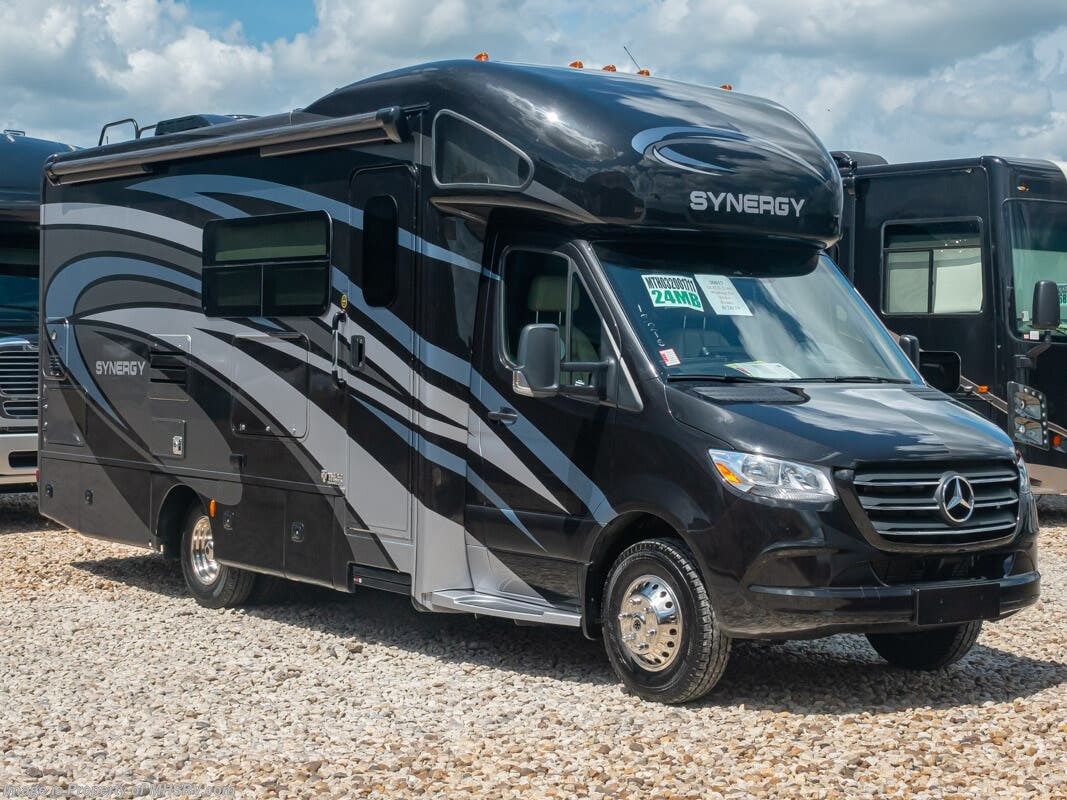

I lost my job a few months back after my divorce with my wife. II’m lauriel from New York, United States.
#Synergy rv transport drivers
* Note: While this is more directed at the situation for a one ton RV Transporter, the concepts apply to all drivers with only the specifics of the math needing some adjustment. If you approach it steady and consistent, just like you're clocking in for a job, you can improve your profit per mile quite a bit.Īnd in the end, it is all about making more money. etc).įive days a week, fifty weeks a year? That sounds like a job to me. This math is also for 5 days a week and 50 weeks a year, which accounts for a 48 hour reset each week and two weeks of vacation a year (vacation from driving, truck repairs.
75,000 miles per year = average of 55 mph. 60,000 miles per year = average of 44 mph. 50,000 miles per year = average of 36 mph. Let's make this real life now and see what the difference in miles per day is - assume 11 hours of driving with the other 3 hours in the 14 hour daily limit being used for meals, pretrip inspections, pickups and drops. Isn't that like getting your truck for free? If you also include the "Almost Fixed Costs" in the calculation (meals / motels), it is more like $0.10 per mile which is $7,500 per year and more than covers your truck payment (of $6,000). So you save $0.044 per mile in fixed costs by running more miles which totals $3,300 per year at 75,000 loaded miles - more than half of the truck payment for the year. 50,000 Miles Per Year (400 miles per day, 5 days a week, 50 weeks a year). What happens to your total fixed costs if you travel more miles in a year? Well, they go down of course. That makes your per mile truck payment $0.12 per mile ($6,000 / 50,000). Your truck payment is $500 / month or $6,000 per year. Now, to make the math easy, let's say you only transport out-bound from the Elkhart area (no back hauls as that is harder to quantify for our purposes), and your loaded miles are 50,000 per year. Insurance - $50 / month (may be more or less depending on equipment and terms of insurance - note: this is only bobtail insurance) You bought a $30,000 used truck and are making payments over a few years, and you pay insurance monthly. Let's say you have a truck payment and insurance payment. The MathOK, so let's look at the math behind the miles and fixed costs. Instead of treating it like a job and maximizing your daily miles (and HOS), you are doing what is required of you to deliver the unit to either keep busy, see the country, or both.įor those actually making a living with RV Transport, making more money will take more intention. Why? Because in most cases, you are traveling less miles per day. You have the chance to Make Even More Money! They either supplement their income with what they make, or they have a budgeted amount to spend out of their pocket on each trip (because they treat it more like a vacation where the travel is paid for). So! now that we've defined them, let's see how hard it is to attack them (remember, this is the low-hanging fruit we're talking about).įor some drivers, RV Transport is a hobby. The non-fixed costs are things like fuel and maintenance - expenses that change based on how many miles you run. 
The range of these expenses, of course, can vary, but they are necessary on each trip. These include meals and motels (for those without a legal sleeper birth). There are also some "Almost Fixed Costs" that occur only when you are on the road. To do this, let's make sure we properly identify what a fixed cost is.Ī fixed cost is any cost that will be the same no matter how many miles you run. So here is the first bit of low-hanging fruit I found. This ensures that we aren't getting too smart for our britches. The first step to a multi-dimensional problem should always be the "low-hanging fruit". That birthed this series, "How To Make More Per Mile Starting Today!!" If they are making good money then they must know the "how" behind it all, right?Īfter weeding through the one line answers like "well, I only go to _ " (insert location of choice - usually not Canada or East), I did find some who could actually walk through the math side of it. When talking with drivers that said they made good money, I asked them to walk me through it. With that fresh memory in mind, I asked for help.

Besides, when you're at a fuel stop or catching a meal talking to the guy next to you, how many times have you heard that his company is paying him $0.15 more per mile than you are getting - only to call his company for a job and find out that they are paying $0.05 per mile less than you are getting. Then the question becomes, just because they say they make money doesn't mean they do make money.







 0 kommentar(er)
0 kommentar(er)
